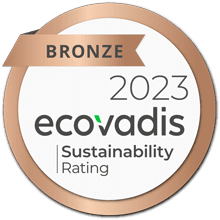Opportunities and challenges in the gene therapy space
A former C-level executive at US-based Editas Medicine Inc told Third Bridge Forum that while there will be progress and setbacks, there is generally a “huge push” towards gene therapy. Valued at USD 670m last year, the global gene therapy market is expected to surpass USD 5bn by 2025.1https://www.marketwatch.com/press-release/at-339-cagr-gene-therapy-market-size-to-surpass-usd-518-billion-by-2025-2019-09-16
A number of diseases previously considered “undruggable” can now theoretically be approached by gene therapy or editing. “A lot of these genetic disease therapies are really addressing the underlying cause,” the specialist said.
Indeed, momentum is building off the back of therapies including Zolgensma, which treats spinal muscular atrophy; Luxturna, which treats retinal disease; and Bluebird Bio’s treatment for a rare blood disorder. This shows that “there’s a new wave of therapies coming along,” he added.
The Interview also looked at how, in terms of gene editing, there is “a lot of hype” around CRISPR technology. Some limitations of traditional CRISPR are starting to surface, however. While “there is a niche for it”, the expert discussed why changes will be needed to make certain types of edits in non-dividing cells. He anticipates there will be a “whole new engineering field around CRISPR” related to DNA binding.
There also remains work to be done to discover the most efficient ways to make vectors – the vehicles that transport DNA into cells. In the Interview, the expert said several small companies that outsourced the manufacturing of vectors were not “entirely happy with the consistency of the results” and decided to bring this process in-house. Although there is currently “very limited capacity for manufacturing”, this is an area he is “sure” will be addressed by the marketplace.
Among other topics discussed in the Interview, hefty investments are also being made in the adeno-associated virus (AAV) as a mechanism to deliver genetic material to cells. AAV is “very efficient at getting into cell types” and “pretty safe”, but there are limitations “to at least be aware of”, according to our expert.
The Interview also looked in depth at CRISPR- Cas9 and associated safety concerns, the ancillary materials that are most critical to the manufacturing of CRISPR therapeutics, and Editas’s positioning versus its peers.
To access all the human insights from the CRISPR Therapeutics & Genomic Editing Interview, click below to view the full transcript.
The information used in compiling this document has been obtained by Third Bridge from experts participating in Forum Interviews. Third Bridge does not warrant the accuracy of the information and has not independently verified it. It should not be regarded as a trade recommendation or form the basis of any investment decision.
For any enquiries, please contact sales@thirdbridge.com



